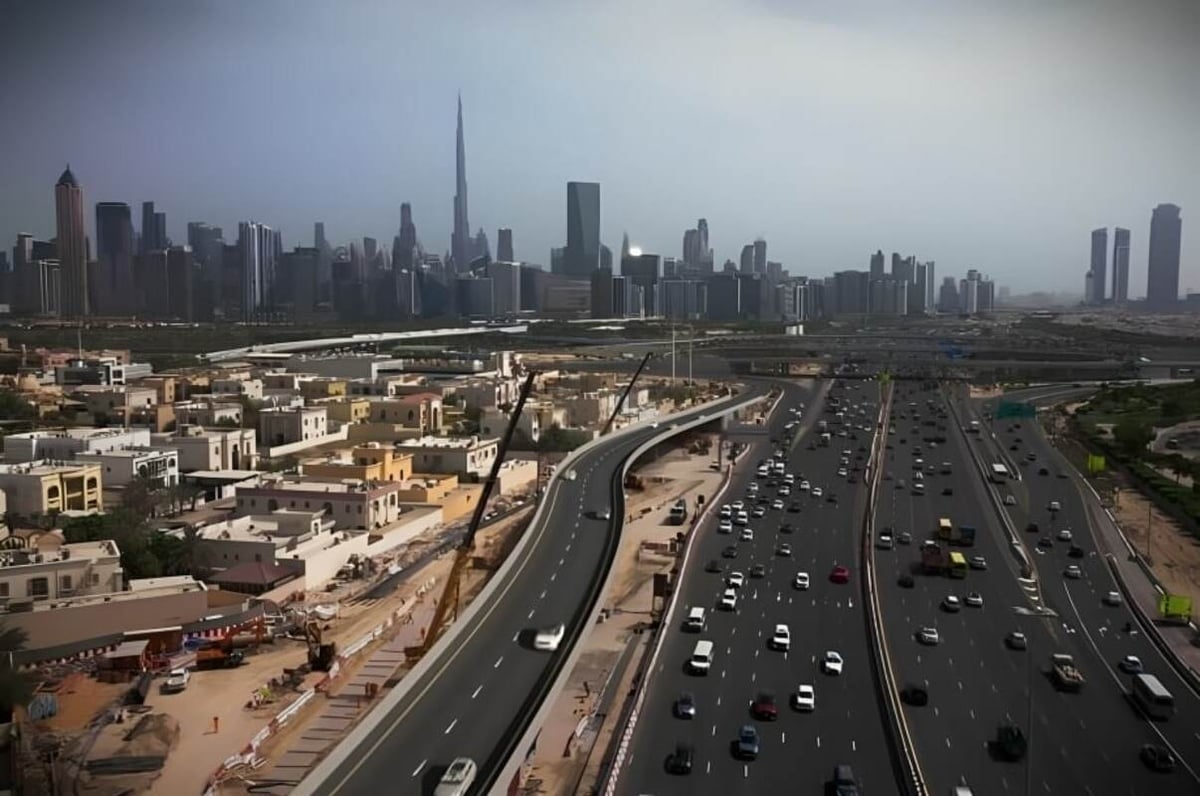Dubai’s Roads and Transport Authority (RTA) has launched major bridges located at Zaa’beel and Al Quoz 1 along Al Khail Road, heading towards Jebel Ali.
These newly completed bridges stretch 1,350 meters and can accommodate approximately 8,000 vehicles per hour. The RTA also announced that the Al Khail Road Development Project has reached an 80 percent completion milestone. This project includes the construction of bridges extending 3,300 meters and the expansion of lanes over a distance of 6,820 meters.
Enhancements across key locations
Enhancements are being made across seven locations on Al Khail Road, which encompass Al Jaddaf, Business Bay, Zaa’beel, Meydan, Al Quoz 1, Ghadir Al Tair, and Jumeirah Village Circle. The initiative further aims to reduce travel times by 30 percent, boost the capacity of existing intersections and bridges by 19,600 vehicles per hour, improve traffic efficiency along Al Khail Road, alleviate traffic congestion at flyovers, and ensure a steady and smooth flow of traffic.
Mattar Al Tayer, director general and chairman of the Board of Executive Directors of RTA, indicated that the project is in alignment with the directives of Dubai Ruler Sheikh Mohammed bin Rashid Al Maktoum. He emphasized the importance of enhancing the road network infrastructure to support the ongoing development in the emirate. Al Tayer noted that the aim is to meet the demands arising from urban development and population growth, as well as to improve traffic flow, an effort that is being guided by Sheikh Hamdan bin Mohammed bin Rashid Al Maktoum, Crown Prince of Dubai and Deputy Prime Minister.
Strategic importance of Al Khail Road
Al Tayer also described the Al Khail Road Development Project as a key strategic initiative designed to develop parallel and supporting road corridors to Sheikh Zayed Road, Sheikh Mohammed bin Zayed Road, and Emirates Road. Al Khail Road serves as a major arterial road in Dubai, stretching from the Business Bay Crossing to its intersection with Sheikh Mohammed bin Zayed Road, featuring five lanes in each direction, with some sections expanding to over six lanes.
Details of the new bridges
Al Tayer further elaborated that the first bridge, located at Zaa’beel, connects traffic from Zaa’beel Palace Street and Oud Metha Street to Al Khail Road towards Jebel Ali. This bridge, measuring 700 meters in length, has three lanes and a capacity of 4,800 vehicles per hour. He further underscored the second bridge located at Al Quoz 1, which connects traffic from Al Meydan Street to Al Khail Road, guiding vehicles toward Jebel Ali. This two-lane bridge spans 650 meters and can accommodate 3,200 vehicles per hour.
For more news on logistics, click here.








